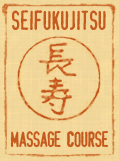Sutemi
When Professor Okazaki was naming his arts, he chose terms that would not only name the technique but would also define a principle or a hidden meaning within that technique. An example would be the art in Oku No Kata named Mae Yama Kage, which translates to “Front Mountain Shadow.” This name gives us an image which conveys a principle and possibly gives us a “feel” on how to do the art. Sutemi is another example of using a name that not only refers to techniques, but a mental concept as well.
The term “Sutemi” translates into “Self Sacrifice,” or total “Self Abandonment”. Normally the term used for falling is “Ukemi” translating into “breakfall.” We know that Sutemi was the word chosen by Professor Okazaki to represent “Ukemi” or “falls”! Again this showed his desire to teach a philosophy as well as techniques. Sutemi or Self Sacrifice then is a point of view about how we should approach and learn falling as well as other aspects of JuJitsu.
Further, Sutemi is to my way of thinking, one of the most important states of understanding needed to be successful at JuJitsu! I don't speak of Sutemi as a fall, or even an attitude to “get into” but rather, a complete way of operating WITHIN the Science of JuJitsu. JuJitsu teaches free attack (Sutemi) expressing total self-commitment as if one's life was being sacrificed. To take a fall without tension or fear which in themselves can cause accidents as well as injuries is the goal. To move with suppleness and to help movement along (Sutemi) is what gives JuJitsu arts their respiration and rhythm.
Have you ever heard the phrase “He who thinks gets thrown?” Showing a lack of understanding about Sutemi! The body that moves naturally, automatically, without too much personal intervention is putting Sutemi into your movements. On the other hand, if you move with fear or calculation, your actions will be slow and hesitant. Given two pairs of people working together in Randori practice, one group resisting each other, winning at all costs, etc. and the other group, going with the technique, letting the arts unfold without resistance, the latter will learn and ultimately master JuJitsu much more quickly. This is contrary to what we see today in free practice, where strength is thought superior to free fall. Still, the principle stands well on it's own merit.
On a personal note, when I first started JuJitsu, I though that I had to impose the rules on all who came to learn from me. For instance, a person who is aggressive, or doubts the effectiveness of every single art, a person who feels beating people up is the only purpose of JuJitsu, this person used to get my best rap, my best explanations to the flaw in their thinking. Now I've come to realize that the art polices itself, because the art properly done require the understanding of Sutemi. The DESIGN of the system then solves most of these types of problems. JuJitsu requires GOING WITH motion, to YIELD instead of confront. People who are confrontational either change or leave. They usually feel bored at all the flowing grace that goes with the practice of our art. It's very hard on the EGO. Actually it's very good for the ego, why?
Sutemi means abandon; abandon self! We have to learn that if we hold on to our current sense of safety for ourselves, we will not Sutemi well. This is because, by the very act of overprotection we defeat the very thing we're trying to protect, ourselves! We learn through Sutemi a better way to protect oneself; by letting go of the focus! By fixating or protecting, or guarding, all energy is put to the effort. Also, fear is part of this image as well. So we guard by fear of a loss of some type. But when you relax, accept gravity so to speak, and make it an ally, we find a whole new world to operate in! We find as we practice, that this going with principle has many ramifications; we can use this principle we call Sutemi in virtually every aspect of our lives.
I have found my happiest moments in life when I relaxed my grip, when I was more accepting of what life brings my way. I found more fulfillment by applying Sutemi in all dealings with others, by going with the situation rather than demanding my own ideas upon it. We all know this is try, because everyday we find that the principles of Sutemi largely determines the way we react to a given situation, and also how we feel about that situation. Isn't it remarkable that one of the most important concepts of daily living is taught to us the first day we start training on the mat? We are lucky indeed!





